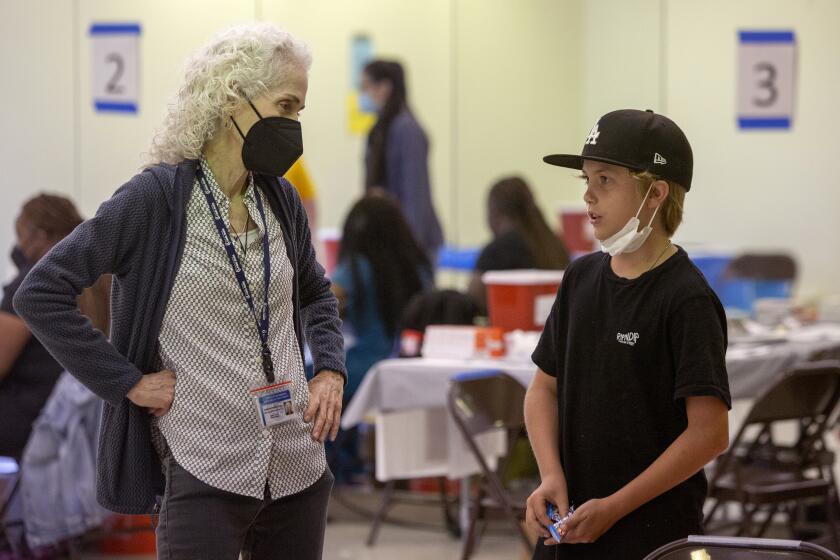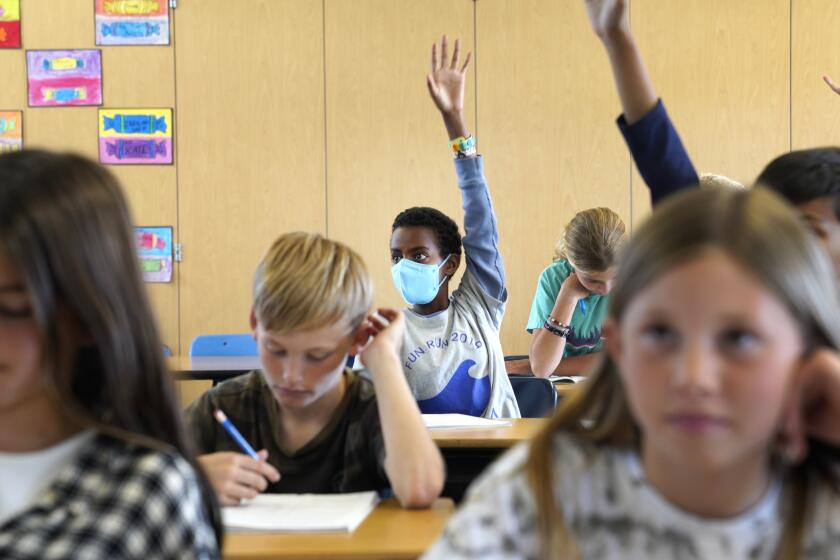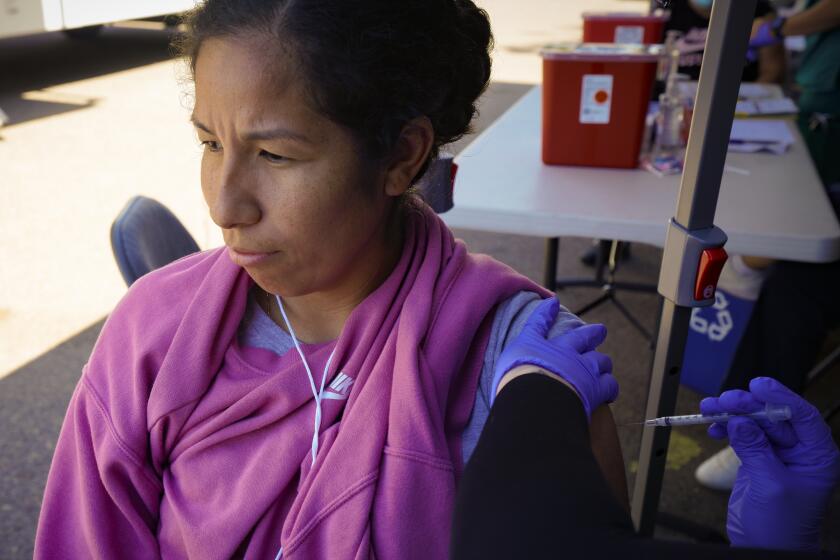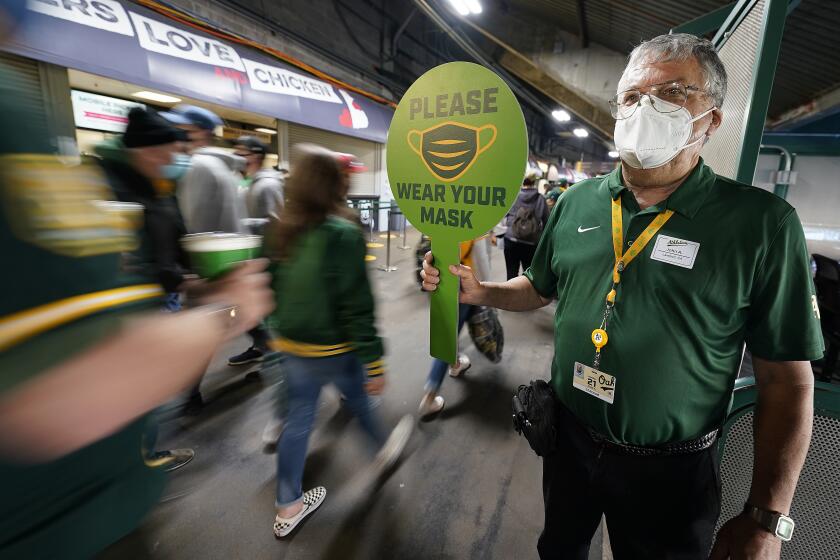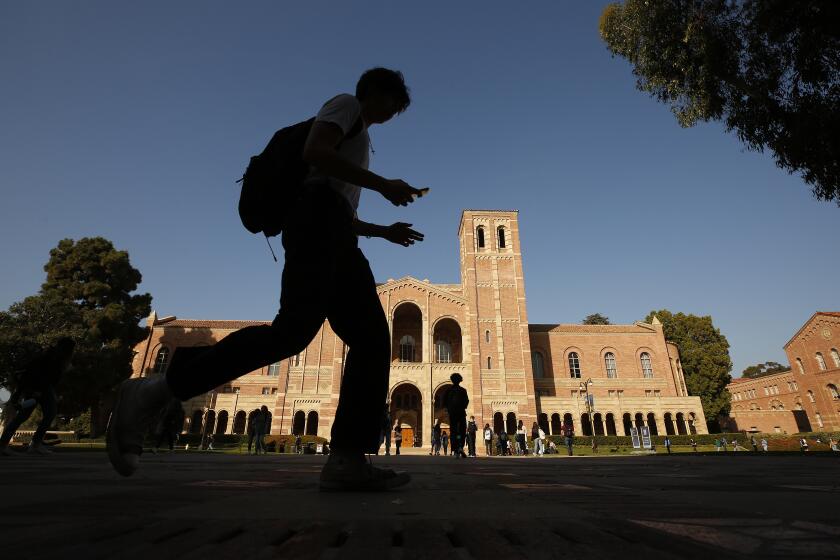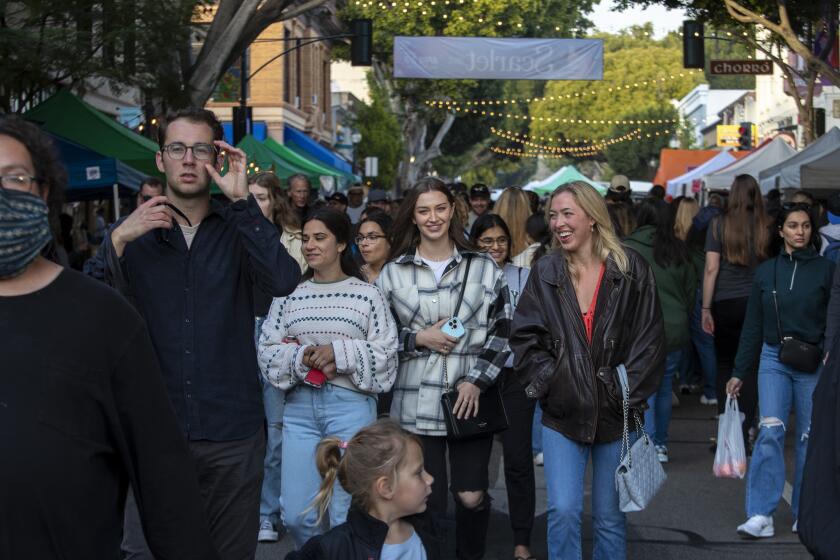Mask rules are suddenly back in California as coronavirus hits danger zone
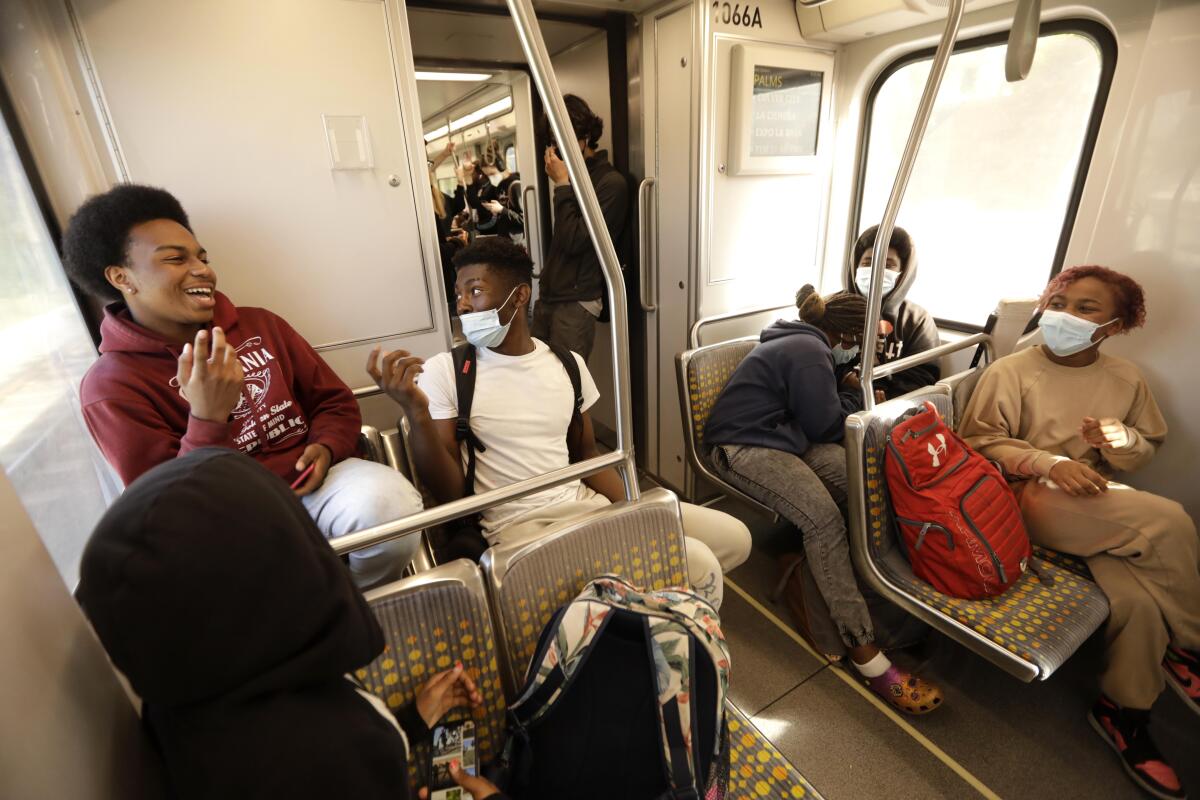
- Share via
Suddenly, California officials are moving toward new indoor mask rules as coronavirus cases enter the danger zone in many parts of the state.
The virus has been spreading rapidly across California after a spring of big declines. That is setting up an anxious summer in which officials are now talking about a return to mask wearing to prevent wider spread.
So far, the biggest concerns have been in Northern California. But Los Angeles County officials say mask mandates are possible by the end of the month if conditions continue to deteriorate.
Why are masks back on the agenda?
The U.S. Centers for Disease Control and Prevention recommends universal indoor masking when a county enters the high COVID-19 community level, the worst in a three-tier system.
Entering the high COVID-19 community level means that new weekly rates of hospitalizations, or hospital capacity, are being affected by coronavirus-positive patients to such an extent that the hospital systems may grow strained.
The concerns come as Alameda County, the Bay Area’s second-most populous county and home to Oakland, ordered a new mask mandate in most indoor spaces effective Friday.
The CDC on Thursday placed 13 California counties in the high COVID-19 community level. It’s the first time since mid-March that any county in the state was in that level.
Nearly 1 in 6 Californians live in a county with a high COVID-19 community level. The affected counties are Santa Clara, Sonoma, Solano, Marin and Napa in the San Francisco Bay Area; Sacramento, Placer, Yolo, El Dorado in the Sacramento Valley area; and Monterey, Mendocino, San Benito and Del Norte elsewhere in Northern California.
What actions are being taken?
Alameda County issued a new mask mandate for most indoor public settings effective Friday, becoming the first California county to do so.
The county, home to Oakland, is the Bay Area’s second-most populous. Its mandate is the first issued in California since the winter Omicron surge faded.
Officials are deciding how best to respond now that COVID-19 cases are rapidly rising after plunging in the spring.
The order does not apply to K-12 school settings through the end of the school year, nor does it apply to Berkeley, which is in Alameda County but has its own public health department. Berkeley’s school system, however, has already implemented an indoor mask mandate.
“Rising COVID cases in Alameda County are now leading to more people being hospitalized, and today’s action reflects the seriousness of the moment,” county health officer Dr. Nicholas Moss said in a statement.
“We cannot ignore the data, and we can’t predict when this wave may end. Putting our masks back on gives us the best opportunity to limit the impact of a prolonged wave on our communities.”
Nineteen California counties, including Orange, Ventura and San Diego, enter a worse COVID tier. Los Angeles County is already in the worse tier.
Alameda County has one of California’s highest coronavirus transmission rates, reporting about 354 cases a week for every 100,000 residents for the past week. That figure has climbed 20% from mid-May. A rate of 100 cases a week or more for every 100,000 residents is considered high.
What are the details?
The Alameda County order will require masks to be worn at indoor businesses and workplaces, including offices, stores, theaters and conference centers, as well as restaurants and bars when not eating or drinking; on public transportation, including taxis and app-hailed rides; and at Oakland International Airport. Businesses and venue operators are required to post signage at all entrance points to communicate the mask requirement and “make reasonable efforts to ensure compliance in their setting,” the health order said.
The county won’t require masking in schools through the few remaining days in the school year. Masks need not be worn while working alone in a closed office or room, while swimming or showering at a gym or while obtaining a medical or cosmetic service involving the head or face for which mask removal is needed to perform the service.
Alameda County also is allowing masks to be optional for performers at indoor live events, such as the theater, opera, symphony, religious choirs and professional sports; at religious gatherings when necessary to perform rituals; and at indoor gyms and yoga studios by people who are “actively engaged in periods of heavy exertion,” are swimming or diving, or when engaged in sports where masks create a risk to health, like wrestling and judo.
Masks will be required in other youth settings, including child care, summer school and youth programs. Children younger than 2 must not mask because of the risk of suffocation.
Alameda County has reinstated an indoor masking rule, the first time a California county has issued a mask mandate since the winter Omicron surge faded.
What about other places?
The Berkeley school system has already issued a mask order for indoor K-12 classroom settings, as well as indoor graduations.
Other educational institutions in California have done the same, including UCLA and Cal Poly San Luis Obispo. Sacramento schools also announced new mask measures this week.
Officials said the mask order was needed to avoid disrupting in-person learning and campus activities, including graduation.
Where does Los Angeles County stand?
L.A. County could be poised to see a new universal indoor mask mandate lat`er this month if the upward trends continue.
“Our weekly case rate and the rate of increase in hospital admissions are of concern,” L.A. County Public Health Director Barbara Ferrer said Thursday. “If we continue on the current trajectory … we’re likely to move into the CDC high [COVID-19] community level within a few weeks towards the end of June, indicating increased stress on the healthcare system.”
According to CDC data issued Thursday, L.A. County observed 5.3 new weekly coronavirus-positive hospitalizations for every 100,000 residents, an 18% increase from the previous week’s rate of 4.5. A rate of 10 or more would place L.A. County in a high COVID-19 community level.
Elsewhere in Southern California, Ventura County had a new weekly coronavirus-positive hospitalization rate of 7.6; Santa Barbara County, 6.3; Orange County, 5.3; San Diego County, 4.9; and Riverside and San Bernardino counties, 2.9.
What are experts saying?
There is still not a clear sense of how bad the summer COVID-19 wave will be in California. Hospitalizations and deaths are still relatively modest.
Some observers say there’s no sign that California is nearing a peak, as the latest variant’s exceptional contagiousness is thought to be approaching that of measles. State modeling suggests, however, that the spread of COVID-19 is likely still increasing in Southern California, the San Joaquin Valley and Greater Sacramento.
Masks may not be required in many places but they’re still encouraged, officials say, as new COVID cases continue to climb.
Even if hospitals don’t become burdened, there’s concern that climbing rates of transmission could keep people at home for a week or more, ruining plans for graduations, weddings and vacations and making it difficult for businesses to maintain adequate staffing.
Of all the COVID-19 restrictions that have been issued over the years, a mask order is among the least onerous to the public, said UC San Francisco epidemiologist and infectious-diseases expert Dr. George Rutherford.
“If you’re going to try and stay in front of this and try and restrict the damage that’s going on, this strikes me as a fairly low-level ask, to have people wear a mask,” Rutherford said.
“We’re not talking about lockdowns, we’re not talking about mandatory vaccination, we’re not talking about mandatory testing programs. We’re just talking about wearing masks, which are highly effective, especially if both people are wearing masks. And it’s something we’re used to doing,” Rutherford said.
More to Read
Sign up for Essential California
The most important California stories and recommendations in your inbox every morning.
You may occasionally receive promotional content from the Los Angeles Times.
